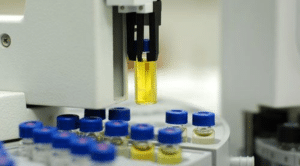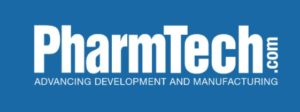Published Articles
Susan J. Schniepp, distinguished fellow for Regulatory Compliance Associates, and Shiri Hechter, senior lab operations manager for Nelson Laboratories, provide a simple approach to method validation and validating analytical methods.
Q. How can an analytical method be validated?
 A. When using an analytical method published in a pharmacopeia, the method is considered validated and it just needs to be verified under actual conditions of use. However, when using analytical methods for routine testing that are not published in the pharmacopeias, it is expected that the method would be validated.
A. When using an analytical method published in a pharmacopeia, the method is considered validated and it just needs to be verified under actual conditions of use. However, when using analytical methods for routine testing that are not published in the pharmacopeias, it is expected that the method would be validated.
United States Pharmacopeia
The United States Pharmacopeia defines validation of an analytical procedure as
“the process by which it is established, by laboratory studies, that the performance characteristics of the procedure meet the requirements for the intended analytical applications”.
The European Directorate for the Quality of Medicines and HealthCare (EDQM), which publishes the European Pharmacopoeia (Ph. Eur.), takes a similar approach stating,
“This chapter defines the different analytical situations (categories) which might occur in an OMCL [official medicines control laboratories] and the corresponding validation characteristics which should be considered. Refer to the current version of the ICH [International Council for Harmonisation] guideline on ‘Validation of Analytical Procedures: Text and Methodology (Q2)’ ”.
Analytical Method Validation
The following examples of industry guidelines provide rationale and approach when validating analytical methods:
- The United States Pharmacopeia–National Formulary (USP–NF) general chapter <1225> Validation of Compendial Procedures
- PA/PH/OMCL (13) 82 R5, Validation/Verification of Analytical Procedures revised in July 2020
- FDA’s Analytical Procedures and Methods Validation for Drugs and Biologics, Guidance for Industry, July 2015
- ICH guideline Q2(R2) on validation of analytical procedures (currently under public consultation) published March 31, 2022.
These documents are inter-connected because they reference each other and the approach they define is based on defining “Typical analytical performance characteristics that should be considered in the validation of the types of procedures …”.
USP 1225
In USP General Chapter <1225>, some typical performance characteristics referred to are accuracy, precision, specificity, detection limit, quantitation limit, linearity, range, and robustness. These characteristics should all be considered when determining the validation approach for any analytical procedure.
Analytical Validation
USP <1225> aims at compendial procedures that include routine tests on raw materials and finished products. The FDA guidance covers new drug applications, abbreviated new drug applications, biologics license applications, and supplements to these applications. Definitions, data elements, and acceptance levels are well documented in these publications. Depending on the objectives of the analytical validation method, data elements could vary.
Method Qualification
For example, USP <1225> defines four categories for consideration. The chapter indicates that Category I–Assay, does not need to have detection limit, whereas Category II–Limit Tests, requires detection limit. The full data elements required for method qualification and validation are detailed in Table 2 in USP <1225>.
Validation Parameters
Similar instructions can be found in ICH guideline Q2(R2) table. The OMCL document also provides reference tables that discusses the source of the method (i.e., Ph. Eur. method, validated method form a manufacturer, etc.) and the validation parameters needed to ensure it is an appropriate method for its intended use.
In summary, when performing analytical method validation, validation parameters and elements are determined based on the analytical test method and the intended analytical application.
Published by:

Pharmaceutical Technology
Vol. 47, No. 2
To begin the Regulatory Compliance Associates scoping process today, please enter your information in the blue form below and click the submit button at the bottom of the webpage. You may also email us at [email protected].
Connect with RCA Today
Contact us to learn more about our regulatory compliance experts and how they can help



















